Introduction

Email marketing is a really useful tool that helps businesses reach out to their audience, create connections, and boost sales. With its wide reach and cost-effective nature, email marketing has become an essential strategy for businesses of all sizes. In this comprehensive guide, we will explore the art of email marketing, providing you with a step-by-step approach to create successful email campaigns that engage your subscribers and yield positive results.
Understanding the Basics of Email Marketing
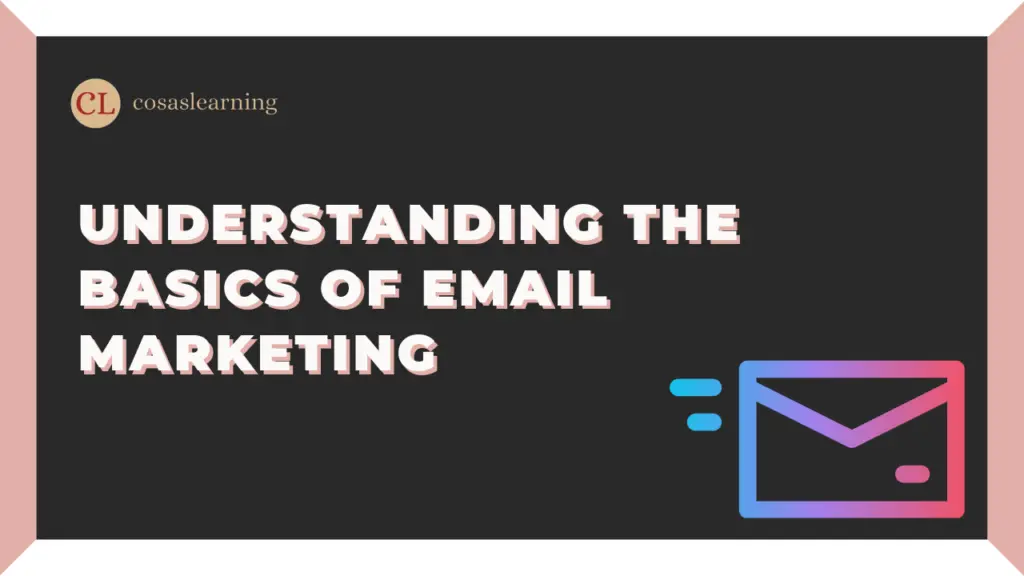
Email marketing is the act of sending promotional messages to a bunch of people using email. These messages can be used to promote products or services, share valuable content, nurture customer relationships, and drive conversions. Email marketing provides businesses with a direct line of communication with their target audience, allowing them to deliver personalized messages and engage customers on a one-on-one level.
Benefits of Email Marketing
- Increased brand awareness and visibility
- Cost-effective compared to traditional marketing channels
- Higher conversion rates and return on investment
- Ability to segment and target specific audience groups
- Measurable and trackable results
- Enhanced customer loyalty and retention
Building an Email List
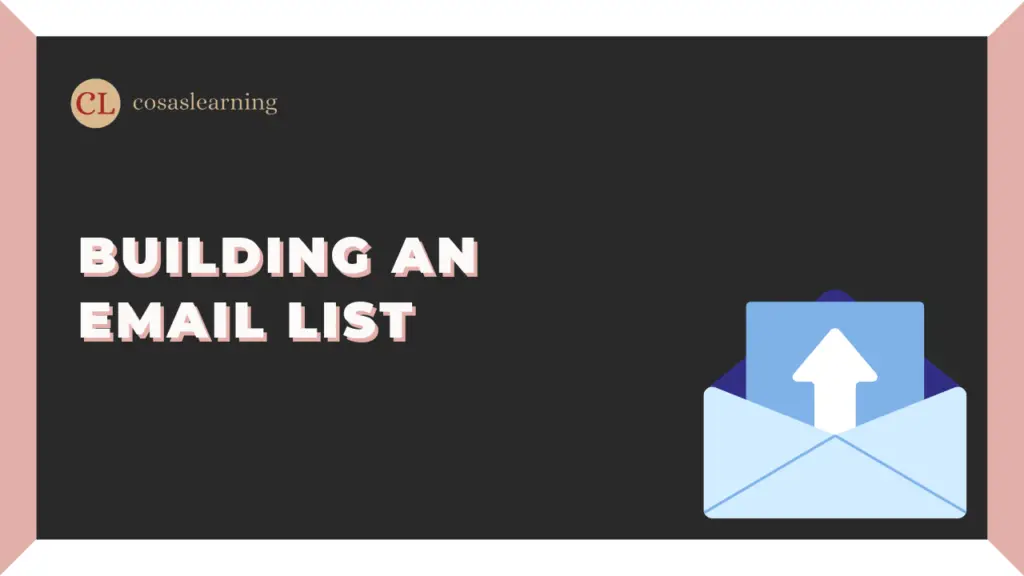
One of the first steps in successful email marketing is building a quality email list. Here are some strategies to grow your subscriber base:
Creating opt-in forms
Opt-in forms are a crucial element in capturing email addresses. Place these forms strategically on your website, blog, or landing pages, offering visitors the opportunity to subscribe to your email list. Ensure that your forms are user-friendly and clearly explain the benefits of subscribing.
Implementing lead magnets
Lead magnets are valuable resources or incentives offered in exchange for an individual’s email address. They can include e-books, whitepapers, checklists, or exclusive discounts. By providing valuable content, you entice visitors to subscribe to your list.
Growing your subscriber base
Utilize various channels to expand your subscriber base. Promote your email list on social media platforms, collaborate with influencers or partners, and participate in industry events to attract new subscribers. Remember to always seek permission before adding someone to your email list.
Crafting Effective Email Campaigns

To create effective email campaigns, you need to plan and structure your emails strategically. Here are key steps to consider:
Defining your campaign goals
Before sending any email, identify your objectives. Whether it’s increasing sales, promoting a new product, or nurturing customer relationships, having clear goals will guide your email content and strategy.
Segmenting your email list
Segmentation means splitting your email list into smaller groups based on certain factors like age, shopping habits, or how involved they are with your content. By targeting your messages to specific segments, you can deliver more relevant and personalized content.
Writing compelling subject lines
Subject lines play a vital role in determining whether an email gets opened or ignored. Craft concise and attention-grabbing subject lines that pique curiosity, offer value, or create a sense of urgency.
Designing visually appealing emails
The visual aspect of your emails is crucial in capturing the attention of your subscribers. Use professional email templates, incorporate your brand elements, and ensure that your emails are visually appealing across different devices and email clients.
Incorporating personalization
Personalization adds a human touch to your emails. Address your subscribers by their first name, recommend products based on their previous purchases, and tailor your content to their preferences. Personalized emails result in higher engagement and conversion rates.
Creating Engaging Email Content
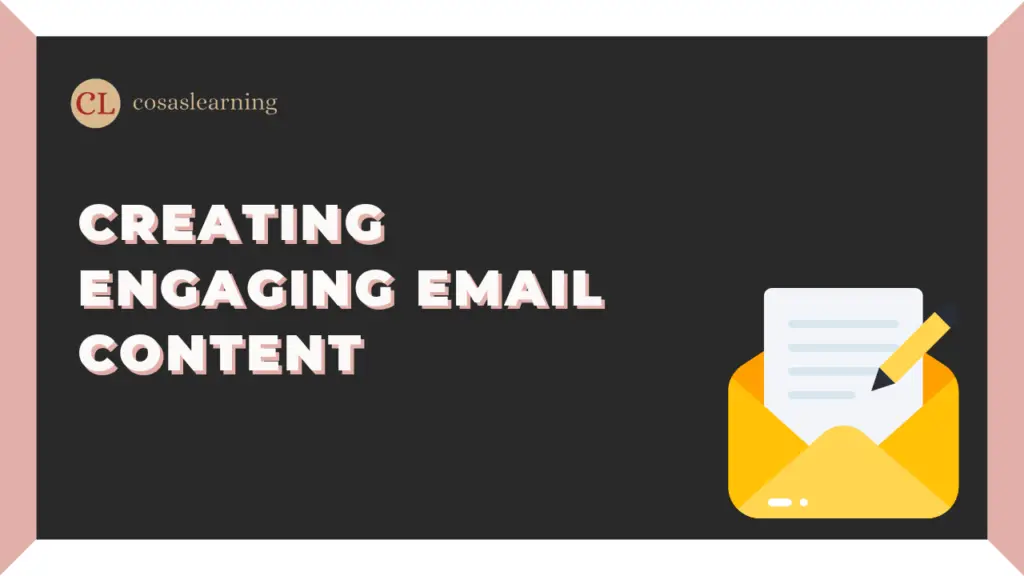
The content of your emails plays a significant role in keeping subscribers engaged and driving actions. Consider the following tips when crafting your email content:
Writing captivating copy
Your email copy should be concise, compelling, and easy to read. Grab your reader’s attention with a strong opening, use persuasive language, and focus on the benefits your subscribers will gain.
Utilizing storytelling techniques
Storytelling is a powerful tool in email marketing. Use narratives, anecdotes, and real-life examples to connect with your audience on an emotional level. Tell stories that resonate with your subscribers and align with your brand.
Adding visual elements
Include relevant images, videos, or infographics to enhance the visual appeal of your emails. Visual content can convey information more effectively and break up the text, making your emails more engaging.
Including clear call-to-actions
Every email should have a clear call-to-action (CTA) that directs your subscribers to take the desired action. Use persuasive and action-oriented language in your CTAs, and make them visually prominent to encourage click-throughs.
Optimizing Email Deliverability
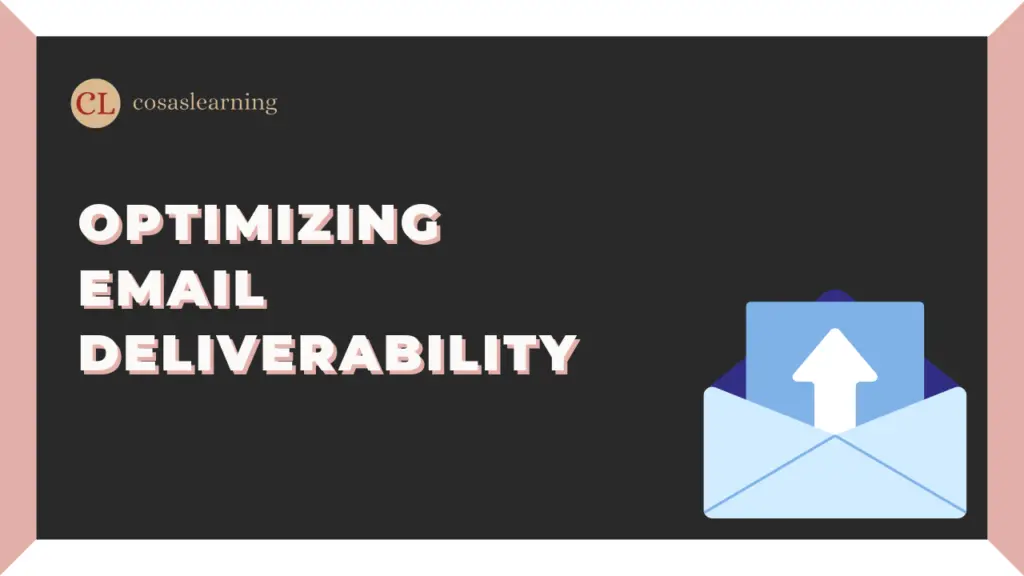
To ensure your emails reach your subscribers’ inboxes and avoid spam filters, you need to optimize email deliverability. Consider the following practices:
Ensuring email deliverability
Use a reputable email service provider (ESP) to send your emails. Follow best practices such as authenticating your domain, maintaining a clean email list, and regularly monitoring your deliverability rates.
Implementing proper formatting and design
Proper formatting ensures that your emails appear correctly across different devices and email clients. Optimize your emails for both desktop and mobile viewing, use responsive design, and avoid excessive use of images or large attachments.
Avoiding spam triggers
Steer clear of common spam triggers that can land your emails in the recipients’ spam folders. Avoid using excessive exclamation marks, all caps, or deceptive subject lines. Comply with email regulations and always provide an unsubscribe option.
Optimizing for mobile devices
With the increasing use of smartphones, optimizing your emails for mobile is essential. Use mobile-responsive templates, keep your content concise, and use legible fonts and buttons for easy navigation on smaller screens.
Testing and Analyzing Email Campaigns
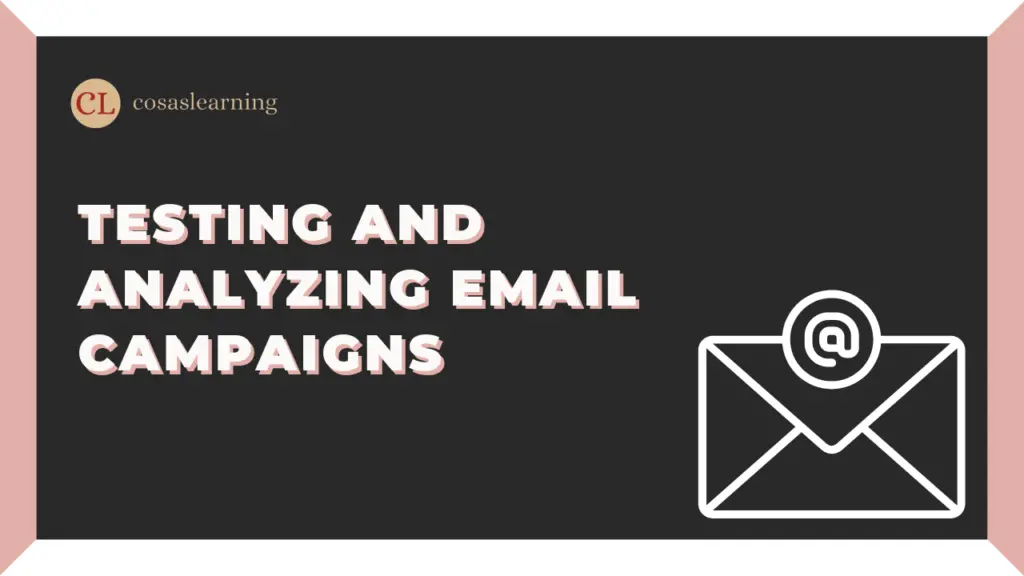
Continuous testing and analysis are key to improving your email campaigns and achieving better results. Consider the following steps:
Conducting A/B tests
A/B testing involves creating two versions of an email and testing them on a small segment of your audience. Compare how well different subject lines, email designs, CTAs (Call-to-Actions), or content versions do to figure out which ones your subscribers like the most.
Analyzing open and click-through rates
Track the open and click-through rates of your emails to gauge their effectiveness. Identify patterns, trends, or outliers to understand what elements are working well and where there is room for improvement.
Monitoring conversions
Ultimately, the success of your email campaigns lies in the conversions they generate. Monitor the conversion rates, such as purchases, sign-ups, or downloads, to measure the impact of your emails on your business goals.
Making data-driven improvements
Based on your test results and analytics, make data-driven improvements to your email campaigns. Iterate on your subject lines, content, design, and CTAs to optimize engagement and conversions over time.
Automating Email Workflows
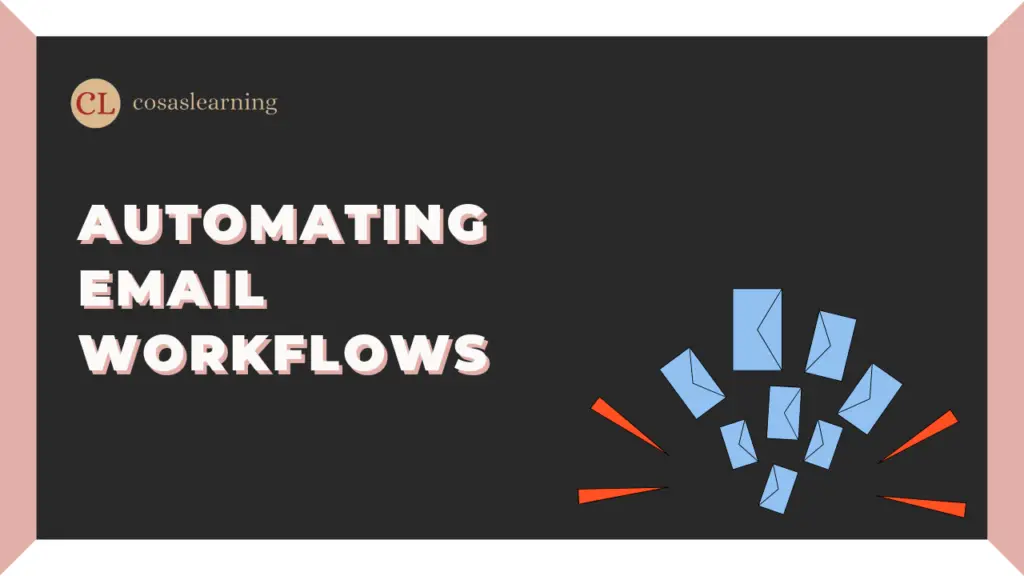
Automation allows you to streamline your email marketing efforts and deliver timely and relevant messages to your subscribers. Consider the following automated email workflows:
Setting up automated email sequences
Automated email sequences are triggered by specific actions or events, such as sign-ups, purchases, or abandoned carts. Design a series of emails that provide value, nurture relationships, or encourage conversions, and set them up to be sent automatically.
Welcome emails
A welcome email is the first communication your subscribers receive after signing up. Take advantage of this chance to introduce your brand, let people know what to expect, and offer them valuable content. Welcome emails are crucial for building a positive first impression and establishing a connection with your audience.
Abandoned cart emails
Abandoned cart emails aim to recover lost sales by reminding customers about items they left in their carts. Include persuasive messaging, images of the abandoned products, and incentives to encourage customers to complete their purchase.
Drip campaigns
Drip campaigns involve sending a series of pre-planned emails over a specific period. These campaigns are useful for nurturing leads, onboarding new customers, or re-engaging inactive subscribers. Plan your drip campaigns strategically to deliver relevant content and drive desired actions.
Ensuring Compliance with Email Regulations
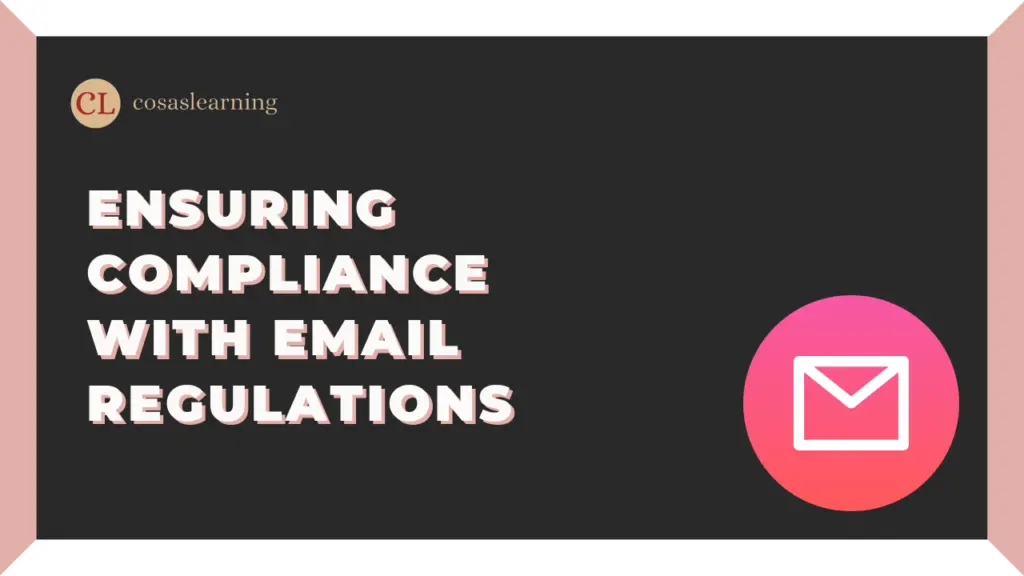
Complying with email regulations is essential to maintain trust with your subscribers and avoid legal issues. Consider the following guidelines:
Understanding CAN-SPAM Act and GDPR
Familiarize yourself with the CAN-SPAM Act (in the United States) and the General Data Protection Regulation (GDPR) (in the European Union). These regulations provide guidelines on how to collect, store, and process personal data and include requirements such as providing opt-out options and obtaining consent.
Obtaining permission from subscribers
Always obtain permission from individuals before adding them to your email list. Implement double opt-in processes to confirm their consent and provide clear information on what they can expect from your emails.
Providing unsubscribe options
Include an unsubscribe link in every email you send. Make it easy for subscribers to opt out of your communications if they no longer wish to receive them. Honor unsubscribe requests promptly to maintain a positive sender reputation.
Email Marketing Best Practices

To maximize the effectiveness of your email marketing efforts, consider the following best practices:
Consistency and frequency
Maintain a consistent email schedule to keep your brand top of mind with your subscribers. However, be mindful of not overwhelming them with too many emails. Find a frequency that strikes the right balance between staying relevant and avoiding email fatigue.
Personalization and segmentation
Utilize the power of personalization and segmentation to deliver tailored content that resonates with different audience segments. Leverage data on subscriber preferences, behavior, and demographics to create highly targeted email campaigns.
Testing and optimizing
Never settle for mediocrity. Keep trying out different parts of your email campaigns, look at the outcomes, and make things better using the information you gather. Optimize your subject lines, CTAs, content, and design to increase open rates, click-throughs, and conversions.
Conclusion
Email marketing is an invaluable tool for businesses looking to engage their audience, nurture relationships, and drive conversions. By following the step-by-step guide outlined in this article, you can create successful email campaigns that capture attention, deliver value, and generate desired outcomes. Remember to keep testing, analyzing, and refining your strategies to stay ahead in the ever-evolving world of email marketing.
FAQs
Click Here : To Show Your Support! 😍





